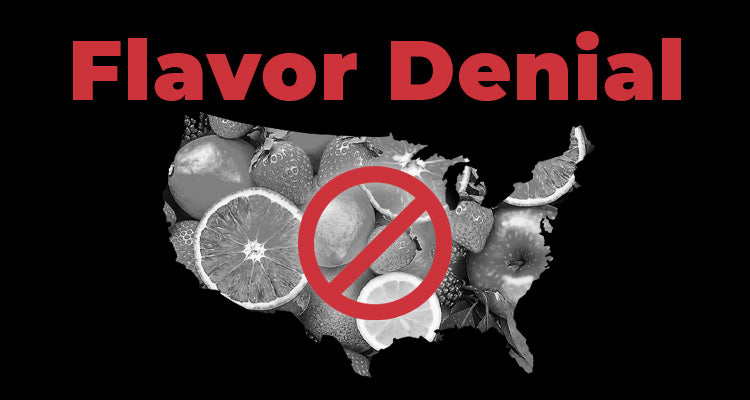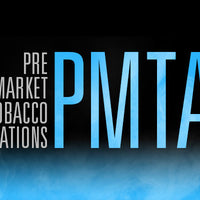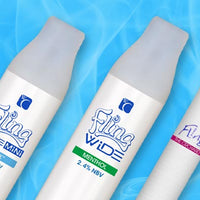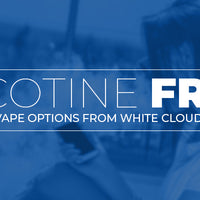September 9, 2021 was a big day for the FDA – a year after a big day for the vaping industry as businesses both big and small scrambled to finish submitting the Premarket Tobacco Applications (PMTAs) required for their vaping products to remain on the market. The FDA offered its 55-page “Guidance for Industry” document which was meant to explain the requirements of PMTAs. This included how to go about submitting scientific data to support our applications, which we’ll get to here in a minute.
The deadline for vape companies to submit their PMTAs to the FDA was September 9, 2020 – and while the majority did meet that deadline, the majority also didn’t hear a peep from the FDA aside from the initial “Acceptance” letter. Then, it was crickets…until just before and even after the FDA’s big day on September 9, 2021.
How the FDA Managed to Ban Flavored Vaping Products

After submitting PMTAs by the September 9, 2020 deadline, most vape companies didn’t hear a word from the FDA after receiving the initial “acceptance” letters indicating that the FDA had received and accepted the applications. For many, like us here at White Cloud, this was a small win and celebration as we all dreaded receiving the possible “Denial” letter, which would indicate the FDA’s denial of an application.
After receiving the initial acceptance letter, the waiting game began. We all patiently waited to receive another letter from the FDA, preferably the letter that would have stated our PMTA had made it to the next phases of the application process – the filing phase, followed by the scientific review phase. For 99% of the industry, those letters never came.
Months went by and still not a word from the FDA, aside from a few companies who received the “PMTA Deficiency” letter, which was to alert companies that their applications were missing important information and provide guidance on how to resubmit the information.
We braced ourselves for the deficiency letter and researched what we needed to do and how to do it so we could be ready. But, that letter never came. And like most other vape companies, we still didn’t hear a word from the FDA…until we got closer to their deadline of September 9, 2021.
In the weeks leading up to and even after this date, the FDA was mass mailing the dreaded “Marketing Denial Order” letters (MDOs), totalling skipping over the other phases in their process, as shown below:

From August 26, 2021 to September 23, 2021, the FDA issued a total of 323 MDOs accounting for more than 1,167,000 flavored products, citing that the applications “lacked sufficient evidence that they have a benefit to adult smokers sufficient to overcome the public health threat posed by the well-documented, alarming levels of youth use of such products”.
So, the FDA basically went from allowing companies to use already existing scientific data both within and outside of the United States as evidence to support their products are appropriate for public health to denying ALL FLAVORED vaping products due to the “lack of PRODUCT-SPECIFIC scientific evidence”.
It sounds a lot like the FDA lied to vaping companies and was planning to outright deny flavored products all along, doesn’t it?
What Kind of Evidence Was the FDA Looking For?

Based on the FDA’s industry guidance, the entire industry was under the impression that we were permitted to use existing scientific data from both within and outside of the United States to support our applications, as explained in the following excerpts from the FDA’s guidance, with important pieces in bold.
From Page 12:
“Given the relatively new entrance of ENDS on the U.S. market, FDA understands that limited data may exist from scientific studies and analyses. If an application includes, for example, information on other products (e.g., published literature, marketing information) with appropriate bridging studies, FDA intends to review that information to determine whether it is valid scientific evidence sufficient to demonstrate that the marketing of a product would be APPH.”
From page 46:
“This guidance discusses FDA’s current thinking on the types of information an applicant should include in a PMTA to help show that permitting the new tobacco product to be marketed would be APPH. Throughout this guidance, we reference suggestions for scientific studies and analyses to support this showing. FDA believes that in some cases, it may be possible to support a marketing order for an ENDS product without conducting new nonclinical or clinical studies. For example, if there is an established body of evidence regarding the health impact (individual or population) of your product or a similar product that can be adequately bridged to your product, such as data from the published literature or government-sponsored databases, these data may be sufficient to support a PMTA.”
Now, the above was in reference to statements made on pages 31 and 32:
“Section 910(b)(1)(A) of the FD&C Act requires that a PMTA contain “full reports of all information, published or known to, or which should reasonably be known to, the applicant, concerning investigations which have been made to show the health risks of such tobacco product and whether such tobacco product presents less risk than other tobacco products…”
“FDA interprets “full reports of all information, published or known to, or which should reasonably be known to, the applicant” to include all information from investigations conducted both within and outside the United States. While all clinical investigations (both within and outside the United States) submitted with your PMTA should be conducted to protect the rights, safety, and welfare of human subjects, you must (under section 910(b)(1)(A) of the FD&C Act) submit full reports of all information concerning relevant clinical investigations. Lack of adequate human subject protection procedures is not a justification for failing to include information on a relevant clinical investigation in your PMTA…”
“Where an applicant chooses to conduct studies, one way to protect the rights, safety, and welfare of human subjects is to ensure that clinical studies included in a PMTA are conducted in accordance with ethical principles acceptable to the international community (e.g., ICH E6 Good Clinical Practice standards)...”
Considering there was already over a decade’s worth of scientific research on electronic cigarettes and vaping – and vape companies didn’t have enough time, resources or finances to complete their own scientific studies – we really thought we were safe from receiving a denial order. Especially for companies like White Cloud who have been in the industry from the beginning and followed all of the rules even before they were rules. At the very least, we expected to receive a deficiency letter with the option to resubmit our applications. But that was not the case.
What Does This Mean for White Cloud?

Unfortunately, White Cloud was one of the 323 companies who received marketing denial orders for flavored vaping products. We spent months following the receipt of our MDO researching other alternatives for keeping the flavored products our customers had come to rely on for years on the market, but to no avail. We’ve been left with no choice but to notify our customers that their favorite flavors are never coming back.
Although the future of White Cloud is still uncertain, we can still offer the following tobacco and menthol flavors that are still under FDA review:
- Regular Tobacco
- Atlantic Cut Tobacco
- Bora Bora Tobacco
- Cherry Black Tobacco
- Menthol
- Zero K Menthol
What Does This Mean for Vapers in the U.S.?

For American vapers, the FDA’s outright denial of flavored vaping products due to the “lack of sufficient evidence that they have a benefit to adult smokers sufficient to overcome the public health threat posed by the well-documented, alarming levels of youth use of such products”, was a slap in the face. Yet again, the government has found a way to prohibit them from using a certain product under the guise of “protecting the children”. It’s a shame that “protecting the children” doesn’t include protecting their parents.
It doesn’t matter if millions of adults, most of whom were lifetime smokers, have real-world experience with using flavored vaping products to transition away from smoking – that’s not the kind of evidence the government wants. It doesn’t matter that there’s already more than a decade’s worth of data to show that vaping products are appropriate for public health when compared to smoking.
The real kicker for U.S. vapers is that other countries like England not only recommend vaping products as an alternative to smoking, but also offer vaping sections on hospital grounds – they’ve even been allowing vape shops to operate right within the hospitals since 2019. And, as of April 2021, hospitals in Norfolk, London, Leicester and Edinburgh are participating in a trial that offers free e-cigarettes to smokers attending the emergency departments, along with training on how to use them in an effort to help smokers kick the habit. If only that could be the picture here in the U.S. – but smoking is big money for the government, and they want their money. This means the land of the free has really become the land of adults who can’t vape flavors.
So what do you do now? Well, your options are either switching to a tobacco or menthol vape flavor, using the government’s “approved smoking cessation aids” – you know, the ones that come in different FLAVORS and are readily available on store shelves within kids’ reach – or going back to smoking. But, if you’d still like to express your concern regarding the availability of flavored vaping products, we strongly suggest getting in touch with your local representatives. Members of Congress are constantly working to tax and/or ban nicotine vaping products due to misinformation and pressure from anti-vaping groups like the Campaign for Tobacco Free Kids, Truth Initiative and others.
To stay up-to-date on vaping laws and calls-to-action, be sure to follow casaa.org.





